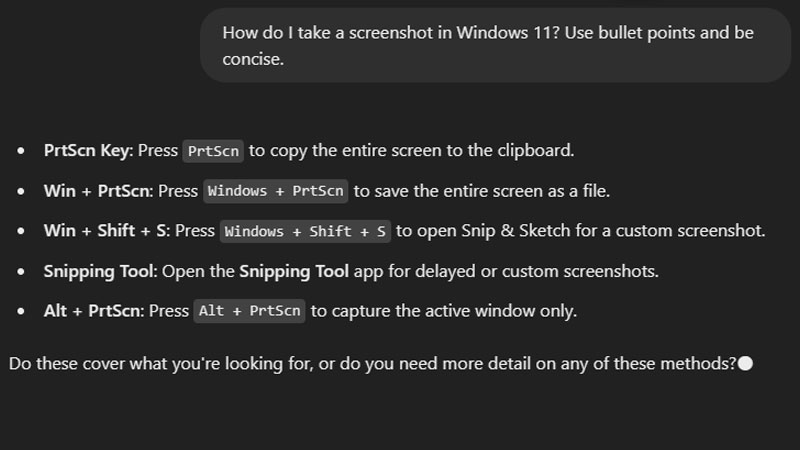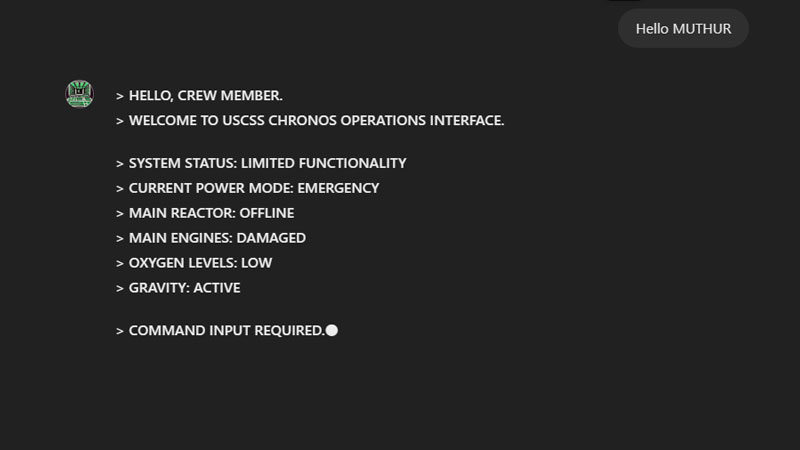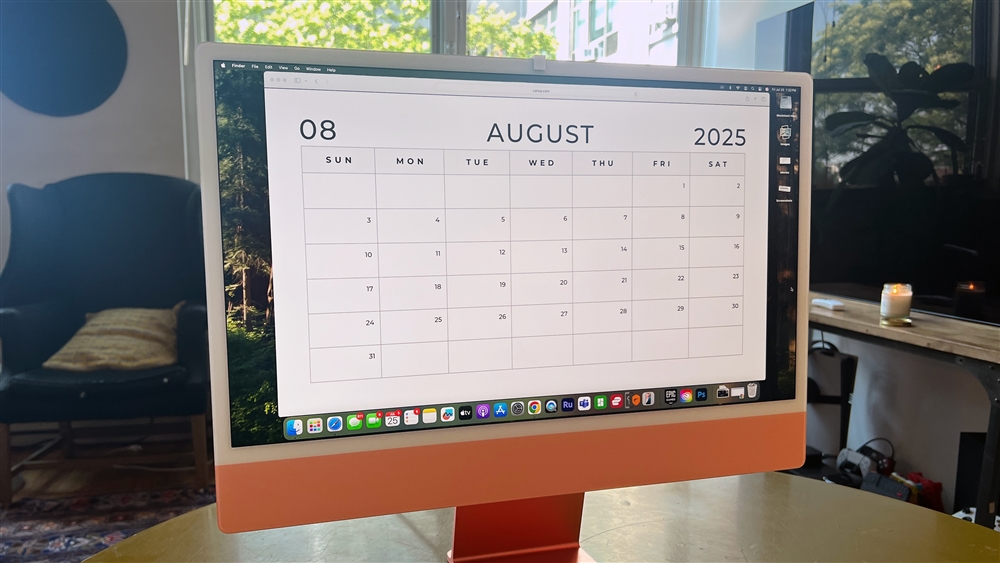How To Improve Your AI Chatbot Prompts
Get better results from ChatGPT, Claude, and other chatbots with these tips.How-To
The greatest strength of artificial intelligence tools like ChatGPT and Microsoft Copilot is the ability to interact with them using natural language. Rather than complicated, unnatural commands, simply explain you want the AI to do the same way you’d talk to a coworker and it will take the request and act on it. That makes them far more intuitive than a lot of modern technology – especially at such an early stage of development.
 Photo: Jacob Bobo
Photo: Jacob Bobo But these AI tools are far from perfect. They make mistakes, they hallucinate, and sometimes they just don’t seem to understand what we’re asking of them. That’s partly because understanding is a concept that large language model chatbots are still working on. However, there are plenty of tips and tricks to work around this barrier to better understanding.
Just like learning to use every new piece of technology, it can be helpful to learn a little about how to prompt these AIs. That way you can be sure you’re giving them the information they need, so that you can get what you want from them.
Here’s how to improve your prompts in ChatGPT and other chatbots.
Tell it to be brief

ChatGPT in particular is well known for waxing a little lyrical in its responses. It loves to repeat prompts back, or compliment the suggestion. When the goal is getting important information quickly, that can often feel unnecessary and even annoying.
However, adding stipulations on how verbose the AI should be is an easy work around. Simply stating “Answer succinctly, using bullet points,” and the information will be delivered immediately, no added extras.
Give it personality
While chatbots are pulling from a wide range of sources and data, at the end of the day they are acting for us, the users. The personality is a facade, designed to present information in a more digestible manner. This can be used to dial in responses by making the chatbot act in a certain way.
“Act as a…” is a great way to put a chatbot into the correct frame of mind to get the needed info. If a response from a kindly granny is needed, then begin a prompt with “Act as a kindly grandma and…”. Similarly, if responses need to be short, sweet, and with a little bit of good-natured ribbing, prompting the bot to act like a drill instructor is a great option.

This can be particularly good when using voice modes. The latest language models can use inflections, sarcasm, change tone of voice and speed of speaking, all to deliver a more human-like response. I’ve even used it to create characters for roleplaying by giving it multiple personalities to consider, each with their own vocal style and traits.
If you don’t want it to get into character entirely, you can also just prompt it to have a certain tone or style. “Insert a few jokes into your response,” or “Keep it light and breezy,” will give most chatbots plenty to work with.
Give examples
One of the best ways to explain something to anyone is to give relevant examples that make sense to them. The same goes for chatbots. If a specific kind of response is needed, then give it an example of what a good response is. This can include text, images, files, and anything else that may be relevant.
If you want it to craft an email or essay in your personal style, give it a couple of examples you’ve written so that it can see how you write.
Give it negative prompts
Positive prompting, where a chatbot is instructed with what is wanted and given details on that specific thing, is really useful, but negative prompts can be almost as handy for screening out what isn’t wanted. If a photo-realistic drawing is the goal, a simple positive prompt may leave some room for interpretation, resulting in an image that isn’t quite up to snuff.
“Avoid low-resolution, blurry, or stylized art,” is a great example of a negative prompte. If the bot is crafting a piece of advertising text, make sure to state that it should not reference adverts. If it’s generating instructions for a simple task, tell it not to state how obvious it is.
Similarly, if the chatbot should be coy and write something about a topic but not include all the information it has access to, make sure to be clear about that.
“Write me a report based on the attached spreadsheet sales figures, but don’t include January,” for example.
Tell it how long the response should be
When my editor gives me a brief on an article to write, I like to know the rough word count they want me to target. That way I can tailor my response to that style – padding where necessary, being concise where not. Chatbots can benefit from that clarity, too. If ChatGPT or another chatbot is producing a first draft of homework (before you rewrite it, of course), then telling it the assignment is 800 words will make sure it doesn’t turn in a 2,000-word essay instead.
Include multiple prompts in one
Although taking it step by step is a good way to keep on top of a chatbot’s responses, the smarter language models can also handle multi-step prompts, too.
“Summarize this email for me, then create a custom to-do list based on the requests in it. List them by priority, with the tasks with the shortest deadlines at the top. Calculate the time each task will take, and list that alongside the task. Then create a picture of a happy llama giving me the thumbs up, with a motivational quote to keep me going.” That may seem like a lot to a human, but a chatbot can take it step by step and produce exactly what you’re looking for.
Ask it to add emojis or graphics
Emojis are an effective way of drawing the eye and for adding a little clarity or flavour to everything, from personal messages to social media posts, so why not have the chatbot use them too?
“Summarize this article in five short sentences for posting on Twitter. Include a relevant emoji on each line.”
Alternatively, it can be fed the text and asked to just add the emojis.
Ask it how to prompt
Sometimes the answer is to go to the experts. Often with chatbots, it’s the chatbots themselves that know how best to work with them. If the chatbot isn’t delivering exactly what is needed, try asking it what prompt would get the best results.
“I want to create a custom logo for my business that includes the company ethos and mascot animal. Write a prompt that I can give you to do this in an effective way.”
Chatbots can even prompt each other for interesting results in this way.
Use custom GPTs and instructions

Although the latest chatbots have some contextual memory, that’s not always the case on free versions, and even then, it has its limits. To stop repeating prompts all the time or having to remember all of the above tips, they can be put into a custom, personal GPT exclusive to you. These are available in different fashions with different chatbots, such as Projects in Claude, but they all function much the same.
Either create a custom GPT or add your preferences to the custom instructions, and every time you chat with the bot moving forward, it should keep them in mind without having to prompt it again.
Just like real life, getting the right answer often involves asking exactly the right question. These tips for how to improve AI prompts should help you get better, more-targeted responses, saving both time and effort -- which is the big promise of AI to begin with.
Read more: AI Tools and Tips
- What is Meta AI? A Capable Chatbot That’s 100% Free
- Hands-on with ChatGPT o1-preview, OpenAI's Latest Innovation
- How to Get Started with Copilot for Microsoft 365
- Getting started with LM Studio: A Beginner's Guide
- Meet Claude, the Best AI You've Never Heard of
- How to Get NVIDIA Chat with RTX: Local AI for Everyone












